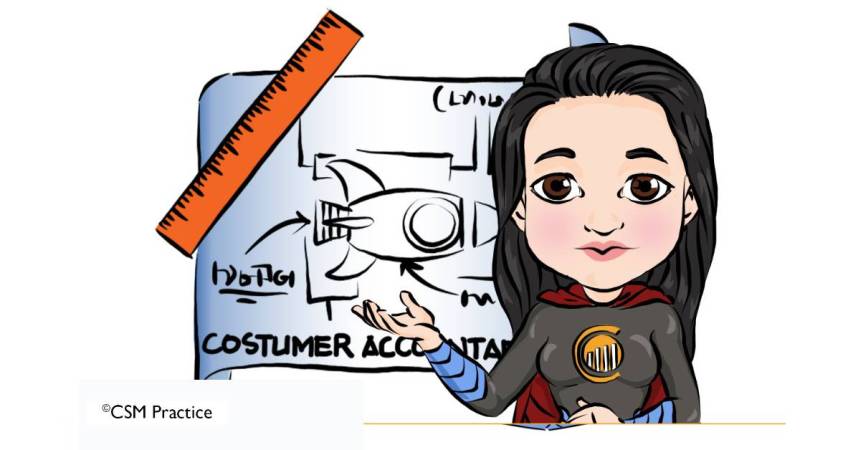Uncovering the Customer’s Role in Success
If you are a Customer Success Manager, you already know that ensuring the success of your clients is one of your key objectives. There are many ways one can go about achieving this success. You reach out to your clients frequently, discuss their current issues, and follow up on their concerns. You even invest the time to train your clients. However, there comes a time when all of this is not enough and your clients do not collaborate with you enough to achieve the desired outcomes.
This often happens when your client doesn’t understand their end of the bargain in the equation called “Customer Success”. For this to happen, you must consider whether you have the right tools in place to establish joint accountability with your client. In this blog post, I am going to share a couple of proven playbooks and tools that my clients applied successfully to achieve this goal.
Why Keep Your Customers Accountable?
When clients purchase your product or service, they rely on you to solve their problems. However, the dependence they typically develop on you, the Customer Success Manager, is too great. The more a customer is dependent on their Customer Success Manager, the lower their chance to maximize the value gained from your solution.
Lincoln Murphy once used a powerful analogy to demonstrate the importance of joint accountability by comparing the engagement of a client with their Customer Success Manager to one with a personal trainer. Here’s how the analogy enfolds: The average time a client spends with their personal trainer each week is around 3-4 hours. The rest of the time the client is on his own, exposed to temptations and unhealthy eating habits. Research shows that clients who are asked to keep a food diary have higher success rates and more understanding of why personal training sometimes fails. More importantly, they have much a higher chance of achieving their desired results. The key takeaway here is that often, your customers don’t understand what they need to do to be successful with you. When things don’t work out, they focus on the symptoms, such as lack of adoption or missing features, and they will blame you for it. To prevent this, you will need to embrace a different tactic to ensure their success. In other words, you need to use the right tools to educate them and make them capable of taking responsibility for their part of the success journey.
What Can Be Done?
Before we dive into initiatives that can be implemented to promote joint accountability, it is important to address the customer-vendor relationship. To start holding customers accountable for their success, you have to build a strong relationship based on trust and mutual understanding. The conversation about the customer’s contribution to their own success might not be one you are used to having. However, you must know your customers well enough to predict their reactions and adjust your actions accordingly.
Roles and Responsibilities
One way you can make sure that your customers understand their part in achieving their success is by drawing up clear roles and responsibilities. For example, when you discuss a plan of action with your client, a readiness plan should be established that clearly outlines what needs to be done before beginning the project.
Areas of responsibility should be divided clearly by your Customer Success team and the customer’s key stakeholders. In other words, the plan would clarify that there should be a team in your customer’s organization that is as dedicated to the project as your Customer Success team. Ideally, this team would consist of a project sponsor (someone who initially requested the project), a project lead (someone who is in touch with you at all times), and a system administrator (someone who takes care of technical implementation). The plan should also highlight whether data and systems are in place, the data is clean, a mapping is available, etc.
Maturity
When adoption is lacking, your customer might not always understand what the source of the problem is. Often, a lack of adoption is an issue because the key stakeholders are not as involved with the project as your best customers are. In such cases, there are a few diagnostic tools you can develop to help them clearly see the problem. One of them is called a Maturity model. You can build a Maturity model that illustrates the level of involvement your client is showing versus other more successful clients.
Use a Maturity model to score your clients and visually demonstrate how to achieve a high level of success. You can fill out the Maturity model with your client or independently before your meeting with them. It can be frustrating to see that the other party does not pull their share of the work, despite your best efforts to clearly articulate it.
Remember to approach the whole situation without judgment and disappointment. Reach out to various stakeholders. A healthy conversation increases the chances of a win-win outcome. If you feel that the relationship with the customer still has value and potential for growth, you can try to escalate your efforts by scheduling a call between your client’s executive sponsor and their executive peer in your organization (ideally your CEO). By taking the issue up with upper management, they can realize that there is additional value yet to be achieved. Hopefully, this will help realign your client with the original vision you set out to fulfill. This time, with the right resources and attitude in place.
Summary
1. One of the main ways to keep customers accountable for their success is to make sure they understand exactly what “being responsible” means.
2. A Maturity Model is a great tool you can develop yourself.
3. Use it to visually encourage the right client behavior.
4. Drawing up clear areas of responsibility will help your client establish the best team to work with you in accomplishing their desired outcome.
5. If expectations are not met, try to engage your client in a conversation without judgment or disappointment.
Next Steps
As you can see, there are many ways to promote responsibility with clients.
If you tried any of these or other tools to promote joint accountability, please share lessons learned with the other readers in the comments below.
This article originally appeared on The Amity Blog and has been republished with permission.
This podcast was produced and originally published by Helping Sells Radio.






